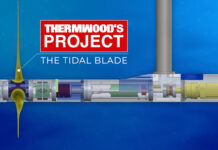The second episode of the year of Additive Talks was dedicated to Additive Manufacturing & Electrification. The topic is discussed in a context where the adoption of AM is most of the time highlighted in electric vehicles, with the ultimate goal of solving climate change.
Here is the thing, electrification is increasingly adopted across several industrial sectors which led industrials seek opportunities and solutions to improve cost, quality, reliability and performance, in both gravimetric and volumetric terms.
Our goal through this conversation was to help industrials understand the different processes that can be electrified; the different fields of activity where AM can serve electrification as well as the challenges industrials should be ready to face in their adoption of AM for electrification-related applications.
To do so, Qdot Technology’s Lead Manufacturing Engineer Danny Lloyd and Oak Ridge National Laboratory‘s Dr. Amy Elliott were invited to discuss this topic.
Disclaimer: Due to some technical issues that occurred during the session, Dr. Amy Elliott has only been able to join the conversation a half hour after the beginning of the conversation (From 33’18’’ in the video.).
Qdot Technology, a spinout of Oxford University’s Thermofluids Institute, is developing net-zero battery-fuel cell hybrid powertrains that don’t compromise on range. One of Qdot’s key enablers is their heat management technology, which utilises cutting edge additive manufacturing.
Interestingly, Qdot targets the electric aircraft market, by focussing on heat removal from batteries. This would help to manage payloads for electric craft, with current battery pack technology unable to meet the demands placed on it. Lloyd explained in this conversation that their thermal management technology is what makes their strength as it has potential to drastically increase power densities, without the need to alter battery cell chemistry.
Key questions discussed as part of this panel
During this conversation, Lloyd provides an interesting context to how this topic is in line with the trend of climate change, the other fields of activity where AM can serve electrification as well as the manufacturing opportunities and challenges when it comes to adopting AM technologies.
Here are a couple of questions asked by the audience:
- Are there applications for polymer AM given the introduction of metal replacement solutions such as PEEK and ULTEM? (21”50’ in the video)
- The combination of copper and SLM is often mentioned as the ideal mix of solutions for electrification applications, electric motors in particular. Are there any technologies and materials you’ve explored in your applications? (23”05’ in the video)
- Do you have specific parts where you use AM in electric drives? (26”14’ in the video)
- Speaking of multi-materials and conductivity, the combination of conductors and isolators is often needed in electric or electronic parts, how do you approach that in AM? (27”48’ in the video)
- Taking into account that polymer materials are used in an electrification-related application. What would be some of the properties of polymer materials required here?
What are some of the manufacturing challenges the team at Qdot faces to develop power trains for electric and hydrogen VTOL aircraft? (39”15’ in the video).





